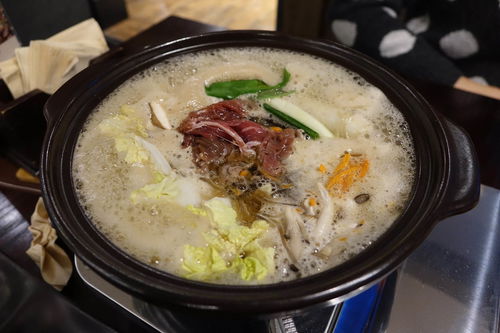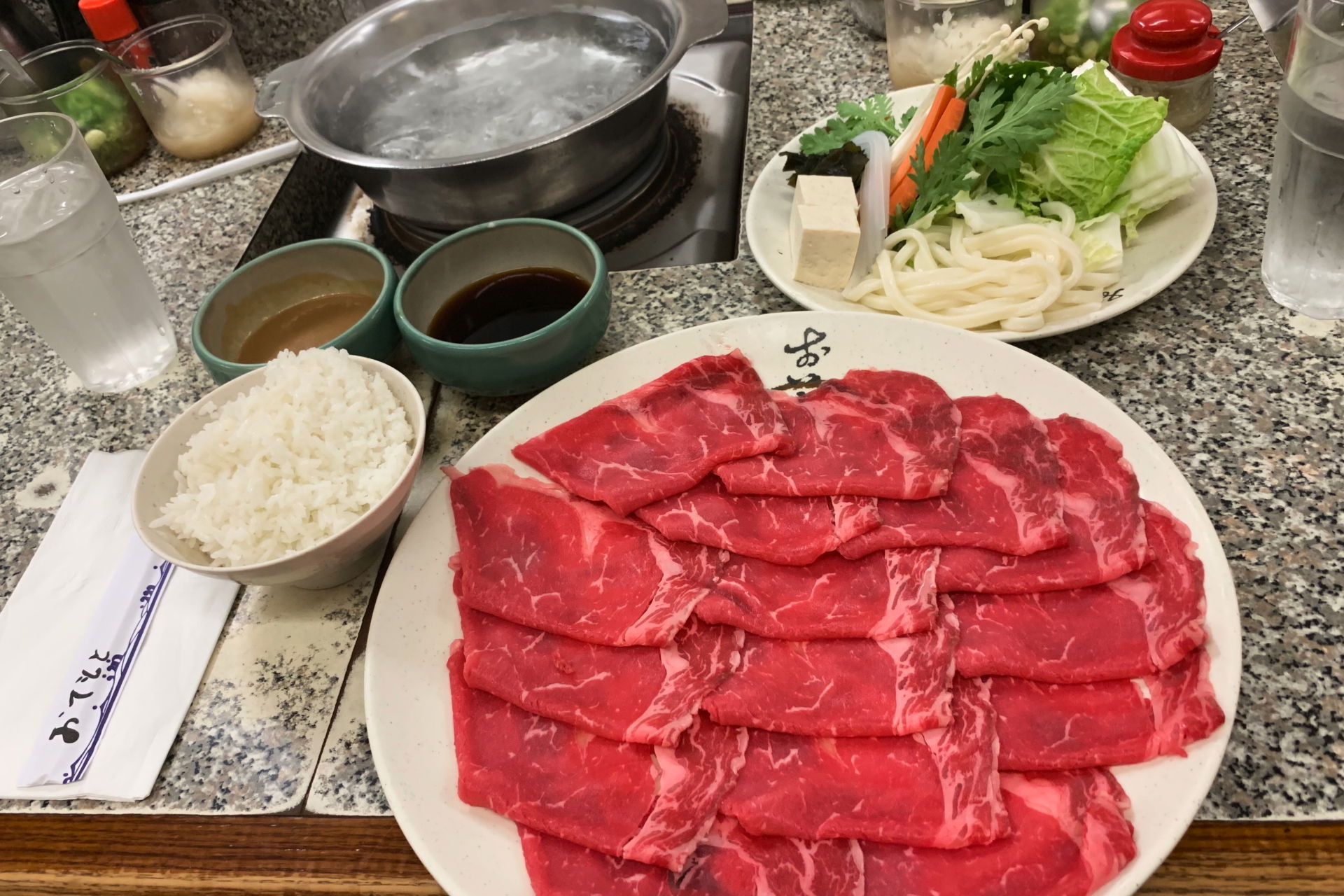2 have already made this dish!
The preparation:
-
First, you need to slice the meat thinly. If you buy it from the butcher, they may be able to slice it for you.
-
Cut the vegetables into bite-sized pieces.
-
Now pour the Dashi into a pot and let it heat up, this can be done directly on the table stove.
-
Cook the harder vegetables first, before moving on to the softer vegetables and tofu.
-
Since you have sliced the meat so thinly, it cooks fastest. It only takes three to six seconds in the hot broth.
-
The meat and vegetables are now ready and can be served with ponzu or sesame sauce.
-
Last, add the Udon noodles to the pot.
-
Heat them for one to two minutes and then serve them with the sauce of your choice.
Table of contents:
Shabu Shabu is the Japanese version of fondue. It is a popular dish especially during the winter holidays when families gather together. This hot pot is also called “Nabe” in Japanese. We will explain more about the different variations in the following article. “Shabu Shabu” comes from the sound you hear when you stir the meat and vegetables in a hot pot with chopsticks. It is prepared directly at the table by each person themselves. In the middle of the table is a portable gas stove and on top of it is a clay pot (“Donabe”). In it is the delicious Dashi broth. The individual ingredients are cut small and placed on different plates all around. In addition, each guest has different saucers with sauces at their place.

Is Shabu Shabu only available at home?
You can eat Shabu Shabu at home, or you can enjoy it in special restaurants. At home, it is traditionally eaten during the holidays, but in the restaurant you can find it all year round. Preparing it at the table is fun, the preparation is quick and easy and it is also healthy. If you have never eaten Shabu Shabu, just try it out. There is certainly a restaurant near you, so you can see directly how the hot pot is traditionally prepared and made. Incidentally, there is also a cool version of the soup that is served in the summer: “Hiyashi Shabu”.
What do I need for Shabu Shabu?
To prepare authentic Shabu Shabu, you need a small gas stove for the table. We recommend this model from Amazon:
You also need a Japanese clay pot (“Donabe”). This keeps the food particularly warm, and it is important that the broth is always very hot. Alternatively, you can also use a clay casserole dish or improvise with a large saucepan.
You also need:
- a pair of chopsticks, which are used by all guests for cooking and serving.
- separate chopsticks and small sauce dishes for each guest.
- a sieve for skimming foam from the broth.
- a plate for each guest
And what ingredients belong to Shabu Shabu?
Broth
Classically, Dashi broth is used for Shabu Shabu. If you want to make a vegetarian version, you can use Kombu Dashi. The broth is super quick to prepare and doesn’t even need to be cooked. You can find more information about Dashi and its different versions in this article.

Vegetables
As so often, the rule for Shabu Shabu is: Anything goes. Vegetable varieties that are often used, for example, are the following:
- Chinese cabbage
- Spring onions (Negi)
- Carrots
- Shiitake mushrooms
- Enoki mushrooms
- Shimeji mushrooms
Meat
Buy high-quality meat (e.g. Rib Eye) and cut it very thinly to ensure it cooks quickly. Meat types that go well with Shabu Shabu are
- Beef
- Pork
Tofu
Medium-firm Tofu is best suited here.
Sauces
- Ponzu Sauce
- Sesame sauce
Side Dishes
- Udon Noodles
- Pickled vegetables ( Tsukemono )
How exactly do you eat Shabu Shabu?
First, prepare the broth. Simply place a piece of Kombu in a pot filled with water. The seaweed will automatically release its flavor into the water. After a few minutes, remove the Kombu and place the broth on the stove in the middle of the table. Bring the Dashi to a boil and arrange the raw meat and vegetables on plates next to it.
When everyone is seated at the table, start by putting the individual ingredients into the hot water using chopsticks. Add the harder vegetables first and then the softer ones later. Then take the meat, dip it in the broth and move it back and forth for a few seconds. After a few moments, it is already cooked and ready to eat.
If foam (“Aku”) has formed, skim it off with a ladle before taking the rest of the ingredients from the Dashi broth and distribute them to the guests. If necessary, there is now room for more vegetables or Udon noodles . After only one to two minutes, these are hot and ready to eat.
The noodles are served with Ponzu sauce . The meat and vegetables can be dipped in one of the sauces and eaten according to taste.
Enjoy!



Comments
HI :) Ich habe das Problem, dass es so feines Rindfleisch nicht beim Metzger geschnitten gibt. Bzw welches Rindfleischstück ist das genau? Lieben Dank :) LG Anna-Lena